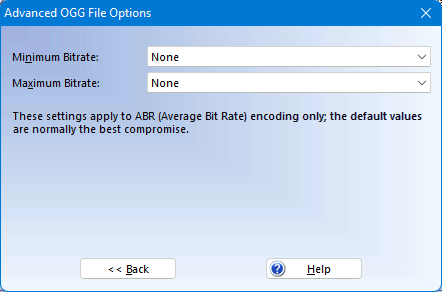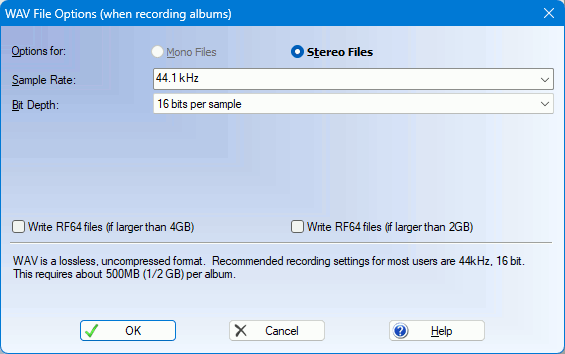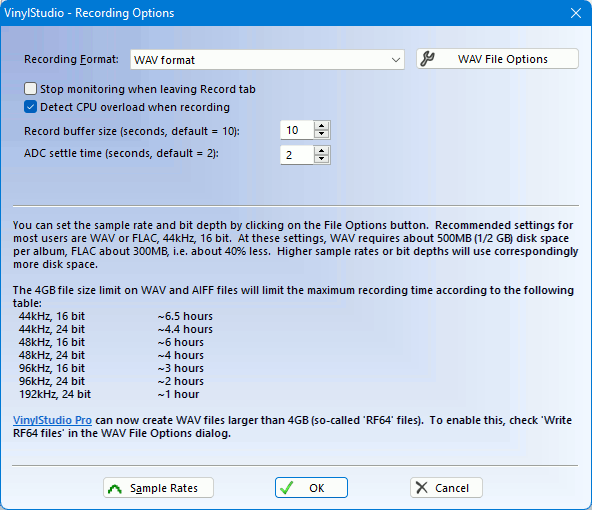


The file format and other options (e.g. sample rate, bit depth and suchlike) that VinylStudio uses when recording is set in the Recording Options dialog, which you can reach from the Record window, from the Check Level dialog, or via the Options menu.
We recommend recording to a lossless format, (such as WAV or AIFF) as this provides the best audio fidelity. You can also record to a lossless compressed format (FLAC or Apple Lossless), which will cut your disk space requirements by about 40% with no loss of sound quality.
If you are short of disk space, you might like to record to a lossy format, such as MP3 or OGG. The resulting files are much smaller - about 75MB per album rather than 500 - but your recordings might not sound as good (depends on your ears). All VinylStudio functions are available on all types of file, and there are also facilities to convert from one format to the other. To help you decide, you might like to make a couple of test recordings and compare them on headphones.
Please note that the format you save your tracks in need not be (and usually isn't) the same as the format used to make your recordings in the first place.
In this dialog:
Stop monitoring when leaving Record tab: disables monitoring when you move to another tab. This can be useful if you want to work on another album while recording is in progress.
Detect CPU overload when recording: will stop recording and pop up an error message if VinylStudio can't keep up. Uncheck this box if you get spurious messages to this effect.
Record buffer size: sets the record buffer size (in seconds). The default (10 seconds) normally works fine but you can increase this (at the expense of higher memory consumption) if you find that the buffer overflows. This can happen when recording to a network drive, for example, because these can sometimes introduce delays.
ADC settle time: this is the time (in seconds) that VinylStudio will wait for before starting recording. Increase this if your ADC needs more time before you get a clean signal.
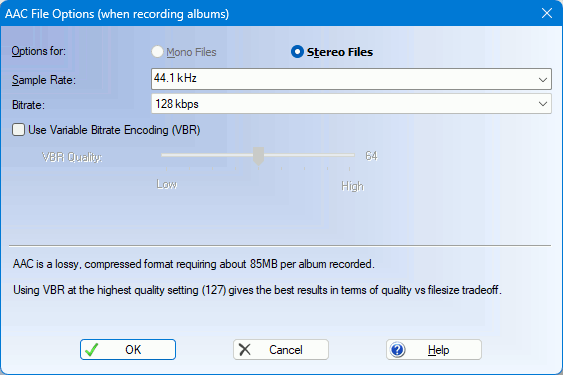
We impose this limitation because cannot handle 96 kHz files. A future version of VinylStudio might relax this restriction.
Bitrate: 128 kbps is generally regarded as 'perceptually transparent', and will usually suffice. Higher bitrates result in larger files.
Use Variable Bitrate Encoding (VBR): This generally results in smaller file sizes for the same sound quality. Recommended.
VBR Quality: move the slider to the right for better sound quality (and larger files) when using VBR encoding.
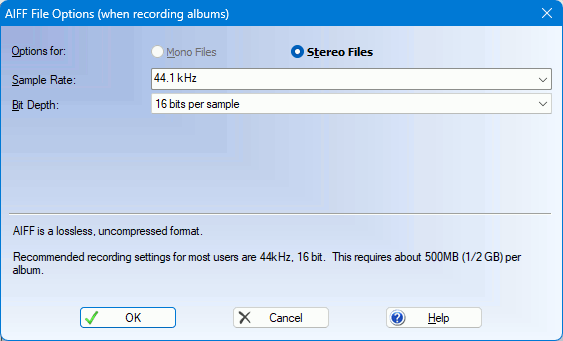
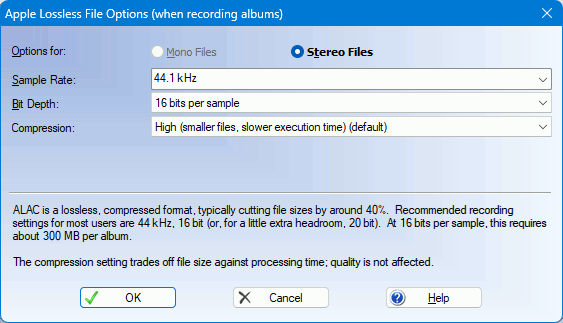

Please note that you cannot save tracks in CAF format (we see no point, because they don't support any form of tagging).
Byte order: Use native, normally, for best performance, but some older applications might only be able to read big-endian files.
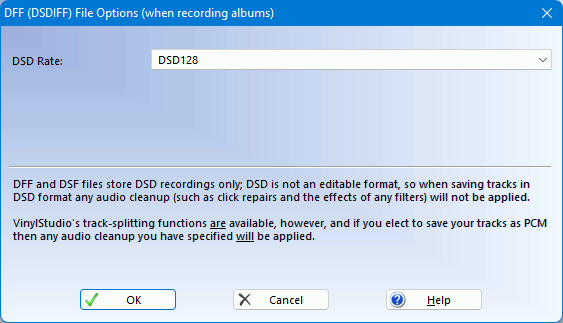
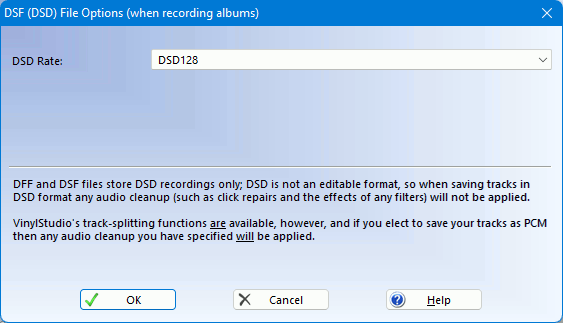
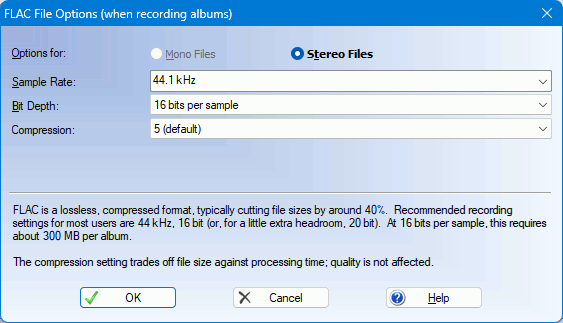
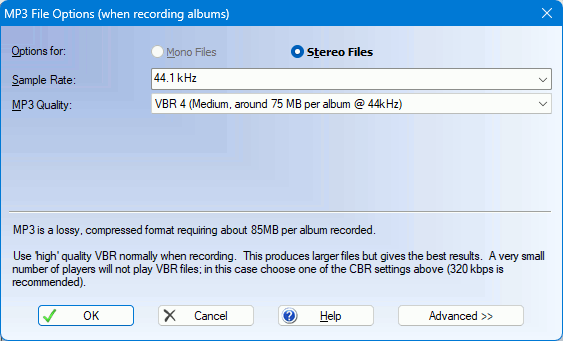
VBR High is recommended when recording as you want the best fidelity.
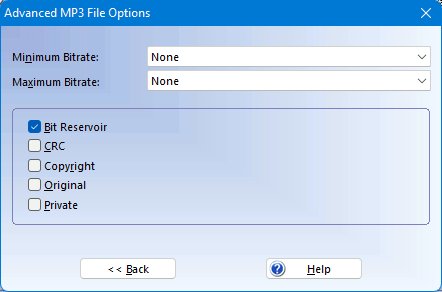
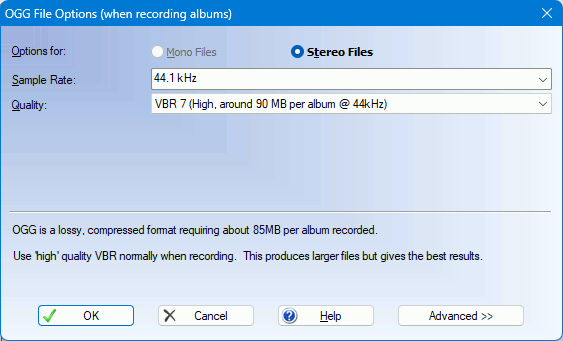
Quality: This allows you to trade off file size against sound quality. Variable Bit Rate (VBR) encoding offers better sound quality than Average Bit Rate (ABR) encoding for the same file size, and is recommended. VBR High is recommended when recording as you want, ideally, perfect fidelity and this setting comes close. VBR Low is generally a good compromise when saving tracks or burning CDs.
Embed Album Art (when saving tracks): as described for MP3 files.
